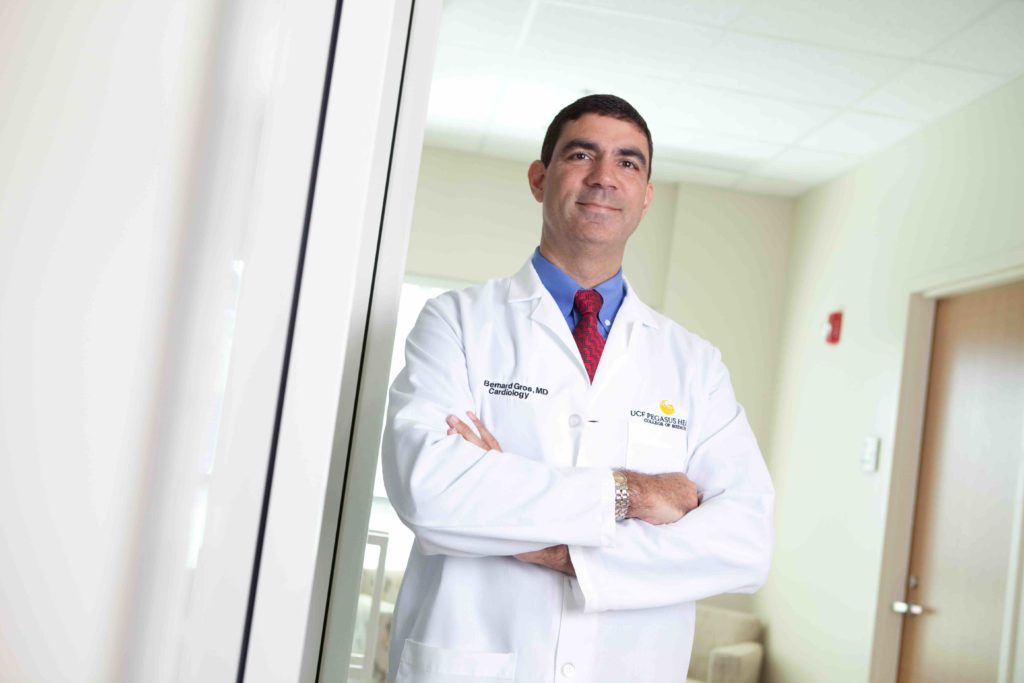
Ocoee middle school teacher Gloria Boisvert was 37 years old when her life came precariously close to ending. A high school athlete and a member of the military for 12 years — undergoing more physicals than the everyday person — she had no reason to believe her heart was on the brink of an attack. Her only aliment was gestational diabetes, a type of diabetes that starts during pregnancy.
“I didn’t make the connection between diabetes and heart disease,” she says. That is, until a visit with her doctor for what she thought was an anxiety attack, proved much worse. Within 48 hours, she had undergone coronary artery bypass surgery to restore blood flow to her heart muscle.
Boisvert’s story is one of the thousands being told by women who are now beating heart disease. Unfortunately, they are also typical in their beliefs at the time of their incidents: only one in five American women believe that heart disease is her greatest health threat.
But the grim truths remain. Heart disease is now the number one killer of women, more deadly than all forms of cancer combined, according to the American Heart Association (AHA). While one in 31 American women die from breast cancer each year, 1 in 3 dies of heart disease. That’s approximately a woman a minute. Perhaps more alarming is that since 1984, more women than men have died each year from heart disease.
Dr. Bernard Gros, a practicing cardiologist at UCF Pegasus Health, the physician practice of the University of Central Florida’s College of Medicine, explains when modern treatment of heart disease was taking hold in the 1980s, a large concentration of preventive measures applied mostly to men.
“It was affecting more men, so the medical community was paying more attention to males,” he explains. It wasn’t until the late 1990s that the magnitude of heart disease in women was recognized. “On the patient side, most women for years believed that cancer was their biggest worry.”
Thanks to the AHA’s Go Red For Women movement, more research and swifter action for women’s heart health is being advocated. For two years, Boisvert served as spokesperson for Go Red For Women, touring the country to bring awareness to the killer that almost took her life.
Boisvert believes in the ten years AHA has been running the Red campaign, more women are aware heart disease is their number one killer, and they are making healthier choices. Studies show those healthy choices have resulted in 330 fewer women dying from heart disease per day.
AHA is also working with insurance companies to allow gynecologists to screen for heart disease. “Many women use the gynecological visit as their physical,” says Dr. Gros. “We need gynecologists to screen for these risk factors.”
Lifestyle Changes
Boisvert had a lot to live for — and still does. At the time of her surgery, she had a 9-year-old son, a 5-year-old daughter and a husband of 15-plus years. Four years after surgery, she ran a 10K and continues to exercise and eat well. But recovery wasn’t easy. “There are side effects to open heart surgery,” says Boisvert. “My chest bone was broken, and I underwent six weeks of cardio rehab. It’s a daily struggle.”
“Women do poorly after having a heart attack,” says Dr. Swathy Kolli, who practices at the Orlando Heart Center, a twenty-five-physician cardiology group. “Depression is common and there are a lot of quality of life issues. Women tend to have more procedural complications in the hospital than their male counterparts and recovery is longer. And once diagnosed with a heart attack or coronary heart disease, it is not going away.”
According to the Women’s Heart Foundation, after suffering a heart attack, women are almost twice as likely as men to have a second one within the first six years. Dr. Kolli notes that practicing a healthier lifestyle is not just preventative, but the treatment as well. The items that help prevent heart disease make up the list that needs to be followed after suffering a heart attack or undergoing heart surgery, such as not smoking, eating healthy and exercising.
Following such guidelines will make one heart healthy, however, she says only 5 percent of women are truly heart healthy.
“I am always telling my patients, whatever you do, do it in moderation. Eat fruits and vegetables, especially the colorful ones as they are good for health.”
A study conducted by the Harvard School of Public Health and the University of East Anglia (United Kingdom) found women who eat at least three servings of antioxidant-rich blueberries and strawberries a week can cut their risks of having a heart attack by 32 percent, compared to those who ate them once a month or less.
Dr. Kolli adds the Mediterranean diet has also shown to minimize the risk of having a heart attack.
Risk Factors & Symptoms
The AHA has found that 64 percent of women who die suddenly of coronary heart disease had no previous symptoms — but they may not have been looking for the right clues. Boisvert felt winded and had heartburn. Most often, women feel arm and jaw pain, nausea, vomiting, shortness of breath, weakness and an overall sick feeling, like the flu. Women should also look out for dizziness, lightheadedness or fainting, pain in the lower chest or upper abdomen and extreme fatigue.
“We have gotten better over the years,” says Dr. Kolli. “But a lot of women do not want to believe heart disease will affect them. Women tend to brush off symptoms.”
Adds Boisvert, “Women don’t think it’s going to be them. Only 50 percent dial 911 when they have symptoms.”
While smoking, high blood pressure, uncontrolled diabetes, family history, being sedentary and overweight, and not eating healthy are typical risk factors for men and women, new risk factors for women have been recently published, adding gestational diabetes, lupus, rheumatoid arthritis and post-menopause to the list.
The AHA notes there is an increased risk for women developing high blood pressure if they are 20 pounds or more overweight, have a family history of high blood pressure, or have reached menopause. And since overeating and not exercising can cause plaque to accumulate and clog arteries down the road, the AHA recommends having cholesterol checked at age 20, or earlier if there is a family history of heart disease.
“Heart disease is 80 percent preventable,” says Boisvert. “Most is lifestyle-related. Everybody has the opportunity to make a single change in the life.”


